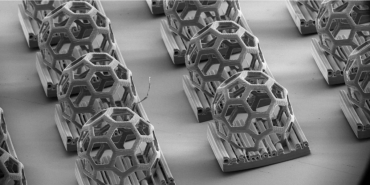
Researchers at Stanford University have introduced a more efficient processing technique that can print up to 1 million highly detailed and customizable microscale particles a day. These 3D-printed microscopic particles are so small that to the naked eye they look like dust, and have applications in drug and vaccine delivery, microelectronics, microfluidics, and abrasives for intricate manufacturing.
